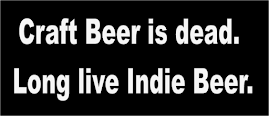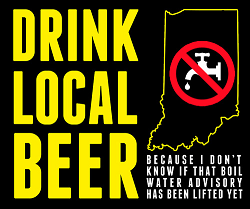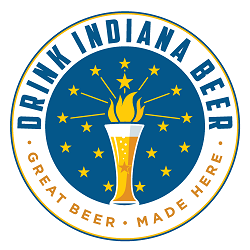AFTER THE FIRE: Euro ’85, Part 34 … The final chapter, in which lessons are learned and bridges burned.
A weekly column by Roger A. Baylor.
(Thirty-fourth and final in a series chronicling my travel year 1985)
It was late in the evening on August 8, 1985.
In fact, it may have been past midnight, making it the 9th, not the 8th, but no matter.
I was back home again in Indiana, after three glorious months in Europe.
Now what?
Luxembourg City had disappeared far too quickly into the Icelandair jet’s rearview mirror. The European continent receded into cloud-blanketed expanses of ocean. After subsequent trips, I’d allow myself a moment’s melancholy at each westward departure, though not this first time.
There was too much to think about.
Many hours later, allowing for an obligatory Reykjavik shopping layover, I stumbled somewhat groggily from a customs checkpoint into the arrival hall at Chicago O’Hare. There John and Kevin were waiting to meet me. They were troopers and true friends, following through just as we’d agreed back in May.
As a bonus, the brothers were holding a cheesy cardboard sign, hand-lettered BAYLOR TAXI.
In this primitive rotary dial era, it had not occurred to any of us to prepare contingency plans in case of problems – a flight delay or cancellation on my part, or a flat tire on theirs. I hadn’t phoned home even once. European pay phones were old-school mystifying, as well as overly expensive. Only a handful of post cards were dropped into letter boxes.
That’s because the entire point of Europe was to get away from the United States, and this is exactly what I’d done. I went away, got away and broke away. Hurdles real and imagined were cleared, and the first pilgrimage was completed.
Now what?
At times, clichés are all we really have, so I can attest that even then, passing through customs, I definitely knew things weren’t going to be the same for me, ever again.
Once wasn’t enough. There’d have be another, and if so, how would I arrange my life for what might be two long years, until my funds enabled the next escape from our stifling Reaganite compound?
I didn’t know the details, only the imperative.
---
We traveled five hours straight home from Chicago, stopping only to devour sliders at a White Castle along the way. This reversion to indigenous form was the first broad hint that in spite of my best efforts to be a new European man, bad American habits surely would worm their way back into my world.
So they did, and so it went.
Within days of returning home, I was filling shifts at the liquor store. Soon school was back in session; teachers immediately started taking off work, and substitute teaching began anew. Money trickled in, and the budget again could be written in black ink.
After a few weeks, there was sufficient revenue to develop those rolls of slide film still hidden in the lead-lined pouch, and at last I could see where I’d visited. Bills were paid, bar tabs settled, and a faint dribble of cash was stashed under the mattress.
Sadly, fiscal restraint suggested a return to inexpensive mass-market beer, except predictably, American swill no longer tasted very good. Eventually it would occur to me to drink less and drink better, but not just yet. Too many hormones required sedation.
Choking down the cheap beer, I grinned, rationalized, and accepted these cost-cutter hardships, keeping two eyes fixed very firmly on 1987, and the expected sequel. Anyway, I worked at a package store.
When all was said and done, Bass Ale and St. Pauli Girl tasted surprisingly good when the employee discount enabled an occasional splurge.
Thirty pounds had disappeared from my frame during three months across the pond. The medical experts probably will say it’s too much, too fast, and accordingly, unlikely to last. They’re absolutely right, and by the end of 1985, I’d found each and every of those lost pounds, and added a few more for good measure.
It all came down to exercise, or the lack of it. When the daily formula is to work two jobs, drink, sleep, rinse and repeat, physical self-care isn’t much of a consideration.
Rather, it was entirely psychological. It was get back to Europe, or bust.
---
Far more than high school and college graduation dates, the year 1985 marks the first great dividing line in my life. There is what came before the European journey, and what happened after it.
Later there would be numerous other narrative junctures involving the usual suspects: Thru-ways, dead ends, lovers, careers, wins and losses; all the things that go to make up a life. There’d also be 34 more trips to Europe, perhaps bearing out the extent of the obsession that blossomed in 1985.
What did it all mean, way back then?
Three decades later, it’s a question I’m still trying to properly assess, and in many ways the available answers are uniformly embarrassing.
I can see more clearly now than before. In spite of the many qualifications and evasions available to me, the mere fact that I took a trip to Europe in 1985 speaks to privilege, not privation. It speaks to how lazy and formless I’d been up to that point.
In 1942, my 17-year-old father ran away from home to fight in a world war, and I was spared this tough choice. We didn’t always agree, but my parents worked hard and sent me to university – for a philosophy degree.
I didn’t go to work in a sweat shop at age 12, didn’t endure domestic violence, and didn’t have many hard decisions to make. In short, I was lucky. It was easy muddling through my youth, such that there was ample time for me in my early twenties to decide at long last to get my act together and set off on a quest, purely elective, to “find” myself.
Most humans on the planet don’t have this luxury. And yet, this life is the only one I’ve ever had, and all I can do is live it.
Europe in 1985 is where and when I grew up, insofar as I’ve ever grown up, which is debatable. Europe was the exact opposite of my undergraduate experience, and far more of an advanced educational seminar than a non-stop party. It’s where things began making sense to me.
Honestly, I was as surprised as anyone. Somewhere inside there were the genes I needed to plan ahead, work hard, save money, and challenge myself.
This is the ultimate point, because at first, I got it backward. I kept thinking that a tenure in Europe was required to gain the experience necessary for growth and self-knowledge, and of course being there proved to be a big part of it, and yet what changed me the most, more than three months in Europe, was the two-year period preceding the trip.
Yes, Europe changed my life. What I didn’t notice at the time was my life changing in order to get to Europe. Finally, I cared about something, and finally, out of nowhere, emerged a work ethic.
Who’d have guessed it?
---
This 1985 travelogue began in 2005. It proceeded by fits and starts until completion in 2016. At this pace, you’ll be lucky if I make it into my 1990s travel history before dying at 101.
There seems to be no good way to end a story that has taken so long to write, so as an attempted coda, subject to future revision, here are three personal legacies of Euro ’85.
Food, cooking … and beer.
Moussaka, clam sauce, blood sausage, Wiener schnitzel, herring and beef tartare are just a few of the culinary high points of Euro ’85. I’d never enjoyed foods like these, and the fact that even a poor tourist might still be able to taste them was impressive.
Coming from a background of largely flavorless meat and potatoes, this exposure was revelatory, but since few of these meals were readily available back home, it was time to take cooking seriously. The only way I’d be able to get the dishes I wanted was to cook them myself, and while much has changed since then, cooking remains a rewarding pursuit.
Meanwhile, beer as a career wasn’t yet apparent to me, and my first European trip wasn’t about compiling or rating brands and styles. My beer understanding remained decidedly imperfect afterward. However, experiencing first-hand the prevailing beer culture in places like Germany, Austria and Ireland was absolutely invaluable, and it obviously informed the Public House.
Language.
In 1985, I’d been exposed to almost as many languages as countries, but the problem with constant movement was a reduced opportunity to make sense of any in detail. Upon return, I vowed to learn a European language, and began stockpiling books, instructional cassettes and videos.
Alas, it came to very little in the end, and three decades later, I still lack proficiency in a second language. However, I know a few words in two dozen languages, and prior to my second journey in 1987, managed to teach myself the Cyrillic alphabet, which made Moscow’s subways navigable.
The lure of urbanism.
I grew up in the Southern Indiana countryside, then went to Europe for the first time and spent nearly all of the trip exploring cities. I’ll grant that it took a while for these urban lessons to be absorbed, but the conversion was genuine.
These days, it seems to me that I inhabit a neighborhood (New Albany) of a larger city (Louisville), albeit it without all of the amenities in infrastructure that made European city life what it was, and remains.
Shouldn’t I be able to board a bus, switch to the subway, and be in downtown Louisville in minutes without once considering the use of my car? Why our endless sprawl? Can’t we fill in those tragic empty spaces where the downtown buildings used to be?
I must stop.
The older I get, the more normal my European interlude in 1985 appears to me. It’s the long trip since then that’s been so damned strange.
---
Previously:
THE POTABLE CURMUDGEON: Euro ’85, Part 33 … All good things must come to a beginning.
THE POTABLE CURMUDGEON: Euro ’85, Part 32 … Leaving Leningrad.
THE POTABLE CURMUDGEON: Euro ’85, Part 31 … Leningrad in three vignettes.
The PC: Euro ’85, Part 30 … Or, as it was called at the time, Leningrad.
The PC: Euro ’85, Part 29 … Helsinki beneath my feet, but Leningrad on my mind.
The PC: Euro ’85, Part 28 … A Finnish detour to Tampere for beer and sausages.
The PC: Euro ’85, Part 27 … Stockholm's blonde ambition, with or without mead-balls.
The PC: Euro ’85, Part 26 … The Hansa brewery tour, and a farewell to Norway.
The PC: Euro ’85, Part 25 … Frantic pickled Norway.
The PC: Euro ’85, Part 24 … An aspiring “beer hunter” amid Carlsberg’s considerable charms.
The PC: Euro ’85, Part 23 … A fleeting first glimpse of Copenhagen.
The PC: Euro ’85, Part 22 … It's how the tulips were relegated.
The PC: Euro ’85, Part 21 … A long day in Normandy, though not "The Longest Day."
The PC: Euro ’85, Part 20 … War stories, from neutral Ireland to Omaha Beach.
The PC: Euro ’85, Part 19 … Sligo, Knocknarea, Guinness and Freddie.
The PC: Euro ’85, Part 18 … Irish history with a musical chaser.
The PC: Euro '85, Part 17 ... A first glimpse of Ireland.
The PC: Euro ’85, Part 16 … Lizard King in the City of Light.
The PC: Euro ’85, Part 15 … The traveler at 55, and a strange interlude.
The PC: We pause Euro '85 to remember the Mathäser Bierstadt in Munich.
The PC: Euro ’85, Part 14 … Beers and breakfast in Munich.
The PC: Euro ’85, Part 13 … Tears of overdue joy at Salzburg's Augustiner.
The PC: Euro ’85, Part 12 … Stefan Zweig and his world of yesterday.
The PC: Euro ’85, Part 11: My Franz Ferdinand obsession takes root.
The PC: Euro ’85, Part 10: Habsburgs, history and sausages in Vienna.
The PC: Euro ’85, Part 9 … Milan, Venice and a farewell to Northern Italy.
The PC: Euro ’85, Part 8 … Pecetto idyll, with a Parisian chaser.
The PC: Euro ’85, Part 7 … An eventful detour to Pecetto.
The PC: Euro ’85, Part 6 … When in Rome, critical mass.
The PC: Euro ’85, Part 5 … From Istanbul to Rome, with Greece in between.
The PC: Euro ’85, Part 4 … With Hassan in Pithion.
The PC: Euro ’85, Part 3 … Growing up in Greece.
The PC: Euro '85, Part 2 ... Hitting the ground crawling in Luxembourg.
The PC: Euro ’85, Part 1 … Where it all began.
_





















